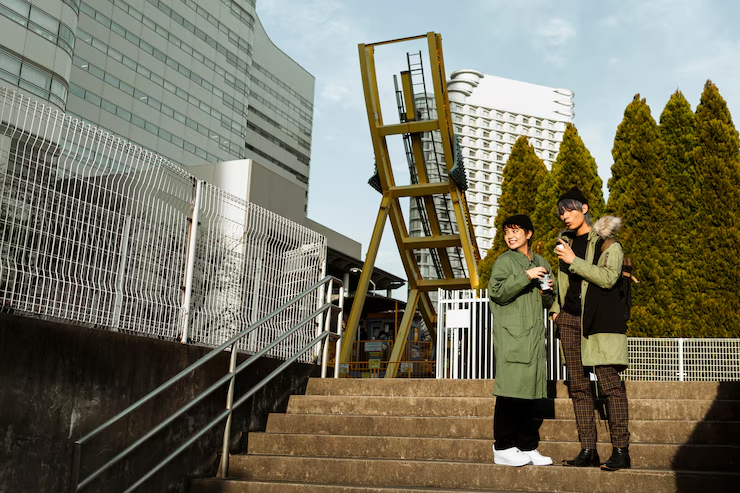In a world dominated by deadlines, responsibilities, and endless to-do lists, the concept of Silly Wankok emerges as a breath of fresh air—a celebration of lightheartedness, creativity, and unapologetic joy. But what exactly is Silly Wankok? Is it a trend, a philosophy, or a cultural movement? This article dives deep into the origins, significance, and benefits of embracing silliness in daily life. Whether you’re a productivity junkie or someone seeking balance, discover how Silly Wankok can transform your perspective and add a dash of whimsy to your routine.
What Is Silly Wankok? Defining the Undefinable
The term Silly Wankok might sound nonsensical at first, but that’s precisely the point. It’s a playful fusion of words meant to defy rigid definitions. Think of it as an invitation to break free from societal norms, embrace spontaneity, and reconnect with your inner child. Unlike traditional self-help concepts, Silly Wankok doesn’t come with rules or checklists. Instead, it’s a mindset—a reminder that life doesn’t always need to be taken seriously.
Origins of the Term
While the exact origin of “Silly Wankok” remains shrouded in mystery, linguists speculate it’s a blend of:
- Silly: Derived from Old English sælig, meaning “innocent” or “happy.”
- Wan: A prefix meaning “pale” or “soft,” symbolizing gentleness.
- Kok: Possibly inspired by the Dutch word for “cook” or a playful twist on “quirk.”
Together, the term evokes a sense of harmless mischief and creative freedom.
Why Silly Wankok Matters in Modern Life
In an era of burnout and digital overload, Silly Wankok offers a counterbalance. Here’s why adopting this mindset is more than just fun—it’s essential for mental health and creativity.
1. Stress Relief Through Playfulness
Studies show that laughter and play reduce cortisol levels, boost endorphins, and improve overall well-being. Silly Wankok encourages activities like:
- Improv games or charades with friends.
- Doodling absurd art.
- Dancing like nobody’s watching.
By prioritizing play, you train your brain to handle stress with resilience.
2. Sparking Creativity
Rigid routines stifle innovation. Silly Wankok disrupts monotony by inviting you to:
- Solve problems backward.
- Invent imaginary languages.
- Brainstorm “worst possible ideas” to unlock unexpected solutions.
Companies like Google and IDEO have long used similar tactics to fuel breakthroughs.
3. Strengthening Relationships
Shared laughter builds bonds. Silly Wankok fosters connection through:
- Inside jokes.
- Collaborative storytelling.
- Themed costume parties.
These moments create memories that outlast superficial small talk.
How to Incorporate Silly Wankok into Daily Life
Ready to infuse your days with whimsy? Here are actionable steps to channel your inner Silly Wankok enthusiast.
Step 1: Start Small
- Morning Rituals: Replace your alarm tone with a funny soundbite (e.g., a chicken clucking).
- Commute Fun: Blow bubbles at red lights or wave at strangers (safely, of course!).
Step 2: Redefine “Productivity”
- Silly Work Breaks: Spend 5 minutes juggling, writing a haiku about your project, or building a tower of office supplies.
- Creative Challenges: Use a random word generator to inspire new ideas.
Step 3: Host a Silly Wankok Gathering
Invite friends for an unstructured hangout featuring:
- A “Bad Art Studio” corner with cheap supplies.
- A contest for the wackiest TikTok dance.
- A potluck where dishes are named after fictional characters.
The Science Behind Silliness
Don’t underestimate the power of play—it’s backed by neuroscience.
Neurological Benefits
- Prefrontal Cortex Activation: Play stimulates brain regions linked to problem-solving and emotional regulation.
- Dopamine Release: Silly activities trigger the brain’s reward system, enhancing motivation.
Case Study: The Laughter Yoga Movement
Founded by Dr. Madan Kataria in 1995, laughter yoga combines intentional laughter with breathing exercises. Participants often report reduced anxiety and improved mood—proof that forced silliness can yield genuine benefits.
Silly Wankok Across Cultures
Playfulness isn’t confined to one region. Let’s explore global traditions that align with Silly Wankok’s ethos.
Japan’s “Otona no Okashi” (Adult Sweets)
Japanese convenience stores sell candies shaped like sushi, tools, and even USB drives—a nod to adults embracing childlike delight.
Spain’s “La Tomatina” Festival
Every August, thousands gather in Buñol to throw tomatoes at strangers. It’s messy, pointless, and utterly joyous.
Denmark’s “Hygge” with a Twist
While hygge emphasizes coziness, adds humor—think board games with ridiculous rules or DIY “ugly sweater” contests.
Overcoming the Fear of Judgement
Many adults suppress silliness due to fear of seeming immature. Here’s how to silence your inner critic:
- Reframe Awkwardness: Awkward moments make great stories.
- Lead by Example: Your authenticity gives others permission to let loose.
- Practice “Silly Confidence”: Start with low-stakes scenarios (e.g., talking to pets in funny voices).
Silly Wankok for Mental Health
Therapists increasingly recognize play as a tool for healing.
Applications in Therapy
- Art Therapy: Creating nonsensical collages to process emotions.
- Narrative Therapy: Rewriting personal stories with humorous twists.
Personal Stories
- Sarah, 34: “After adopting , my anxiety attacks decreased. I now have a ‘joke journal’ to vent frustrations.”
- James, 28: “My team’s ‘Silly Hour’ at work boosted morale and collaboration.”
The Future of Silly Wankok
As society grapples with existential threats, the need for levity grows. Expect to see:
- Silly Wankok Retreats: Vacations focused on play and creativity.
- Corporate Training Programs: Workshops teaching leaders to balance seriousness with spontaneity.
- Digital Detox Trends: Apps that reward users for offline silliness.
Conclusion: Dare to Be Silly
Silly Wankok isn’t about ignoring life’s challenges—it’s about facing them with a grin. By weaving playfulness into your routine, you’ll discover newfound resilience, creativity, and connection. So go ahead: wear mismatched socks, speak in rhymes, or invent a silly dance. After all, as the saying goes, “You don’t stop playing because you grow old; you grow old because you stop playing.”










